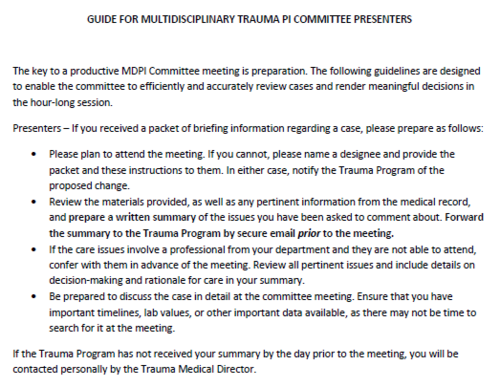I’ve updated my original post on trauma undertriage when activating your trauma team. The initial post gave a general approach that was reasonably accurate as long as the number of missed activations was low. Here’s the new and improved version!
Trauma centers look at over- and undertriage rates as part of their performance improvement programs. Both are undesirable for a number of reasons. I’ll focus on undertriage today, why it happens and what can be done about it.
Undertriage in trauma care refers to the situation where a patient who meets criteria for a trauma activation does not get one. First, calculate your “magic number”, the number of patients who should have been trauma activations.
If you track the exact triage criteria met at your hospital, it is calculated as follows:
Magic Number = (Number of ED trauma patients who met activation criteria
but were not trauma activations)
If you don’t track the triage criteria, you can use ISS>15 as a surrogate to identify those patients who had severe enough injuries that should have triggered an activation. This is not as accurate, because you can’t know the ISS when the patient comes in, but it will do in a pinch. In that case, the magic number is:
Magic Number = (Number of ED trauma patients with ISS>15
but were not trauma activations)
Your undertriage rate is then calculated as follows
Magic Number
———————————————————– x 100
(Total number of trauma activations) + Magic Number
Undertriage is bad because patients who have serious injuries are not met by the full trauma team, and would benefit from the extra manpower and speed possible with an activation.
The most common causes for undertriage are:
- Failure to apply activation criteria
- Criteria are too numerous or confusing
- Injuries or mechanism information is missed or underappreciated
Undertriage rates can range from 0% to infinity (if you never activate your trauma team). A general rule is to try to keep it below 5%.
If your overtriage rate is climbing past the 5% threshold, identify every patient who meets the ISS criterion and do a complete ED flow review as concurrently as possible. Look at their injuries/mechanism and your criteria. If the criteria are not on your activation list, consider adding them. If the criterion is there, then look at the process by which the activation gets called. Typically the ED physicians and nurses will be able to clarify the problem and help you get it solved.

